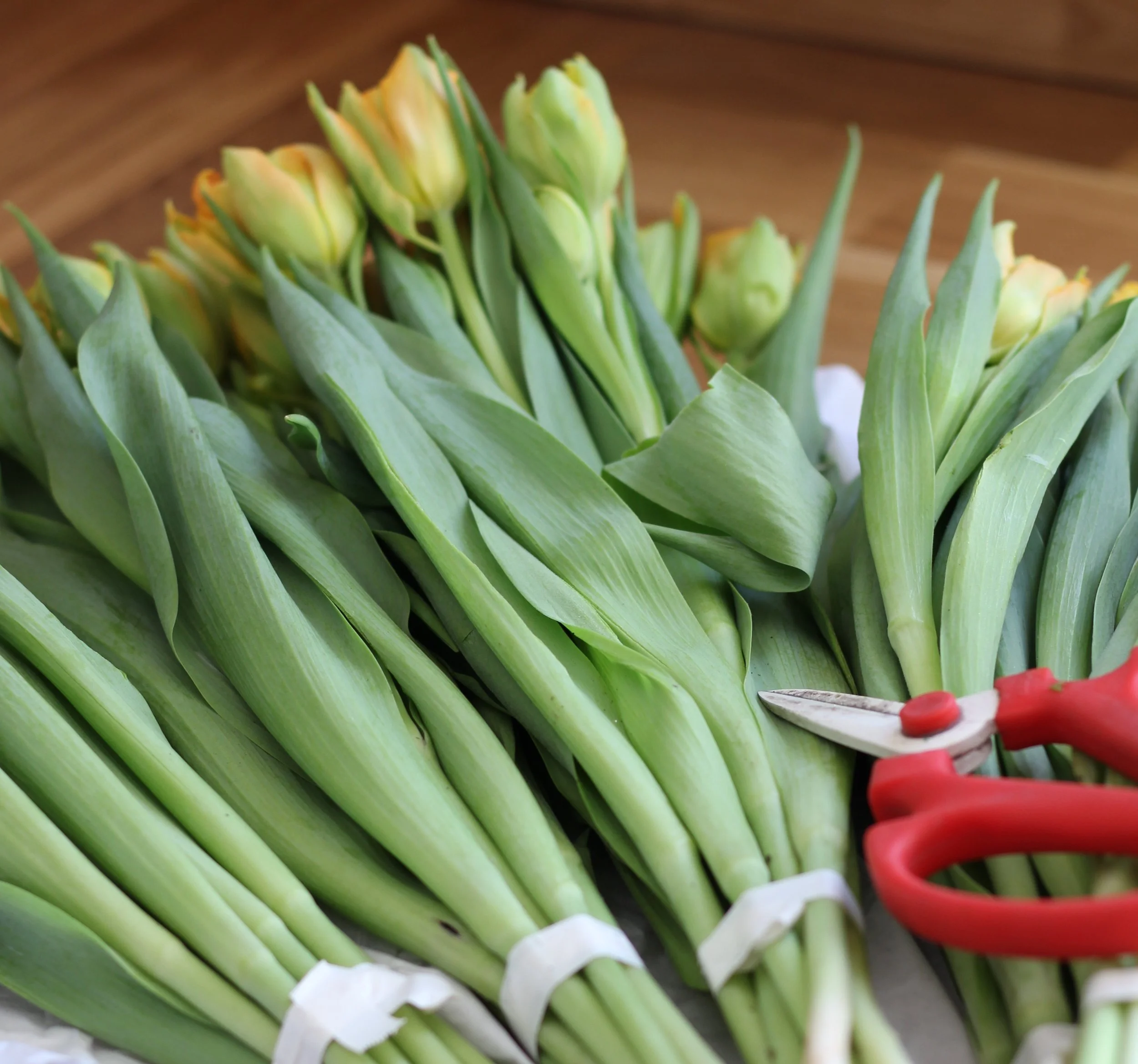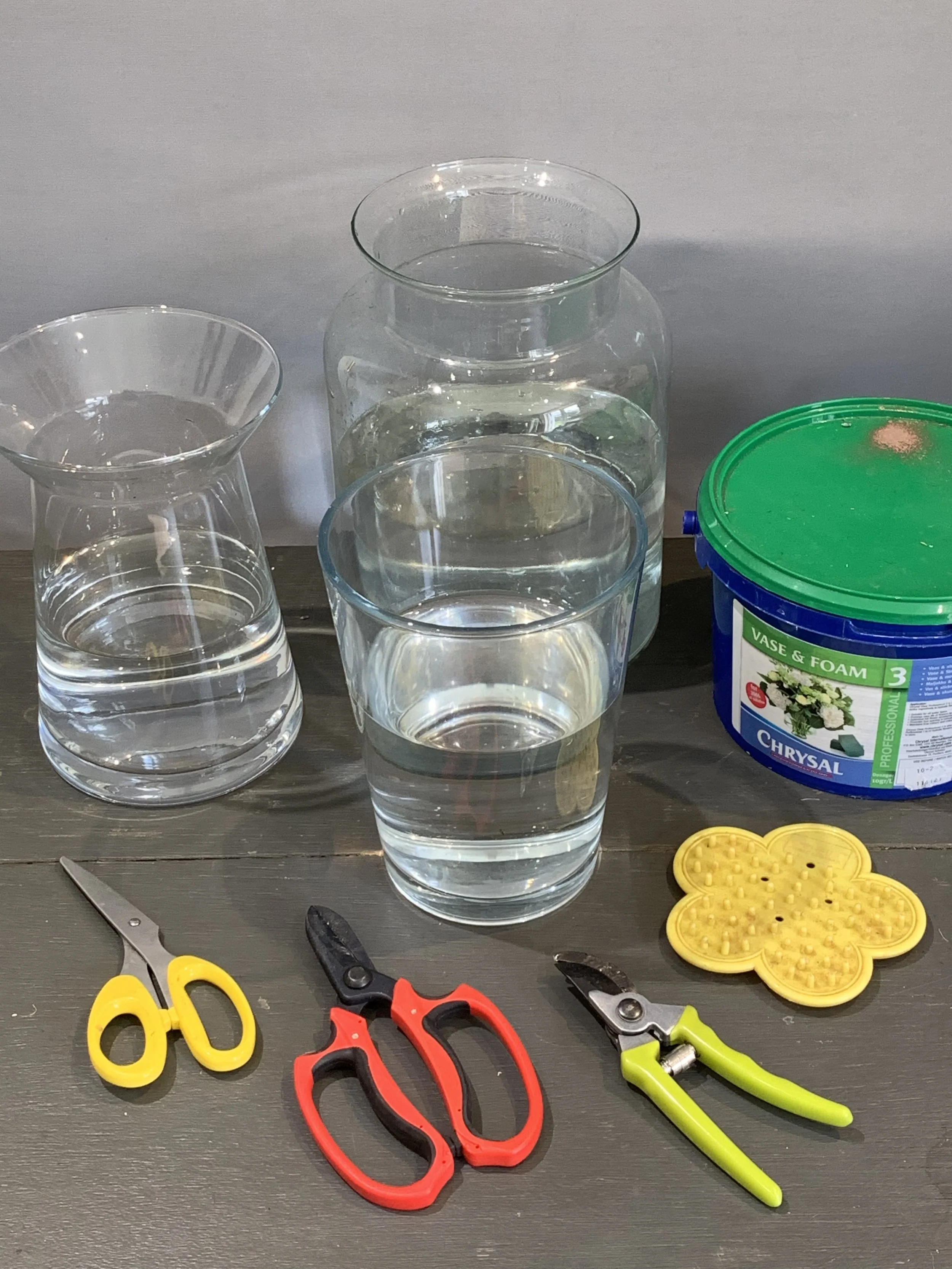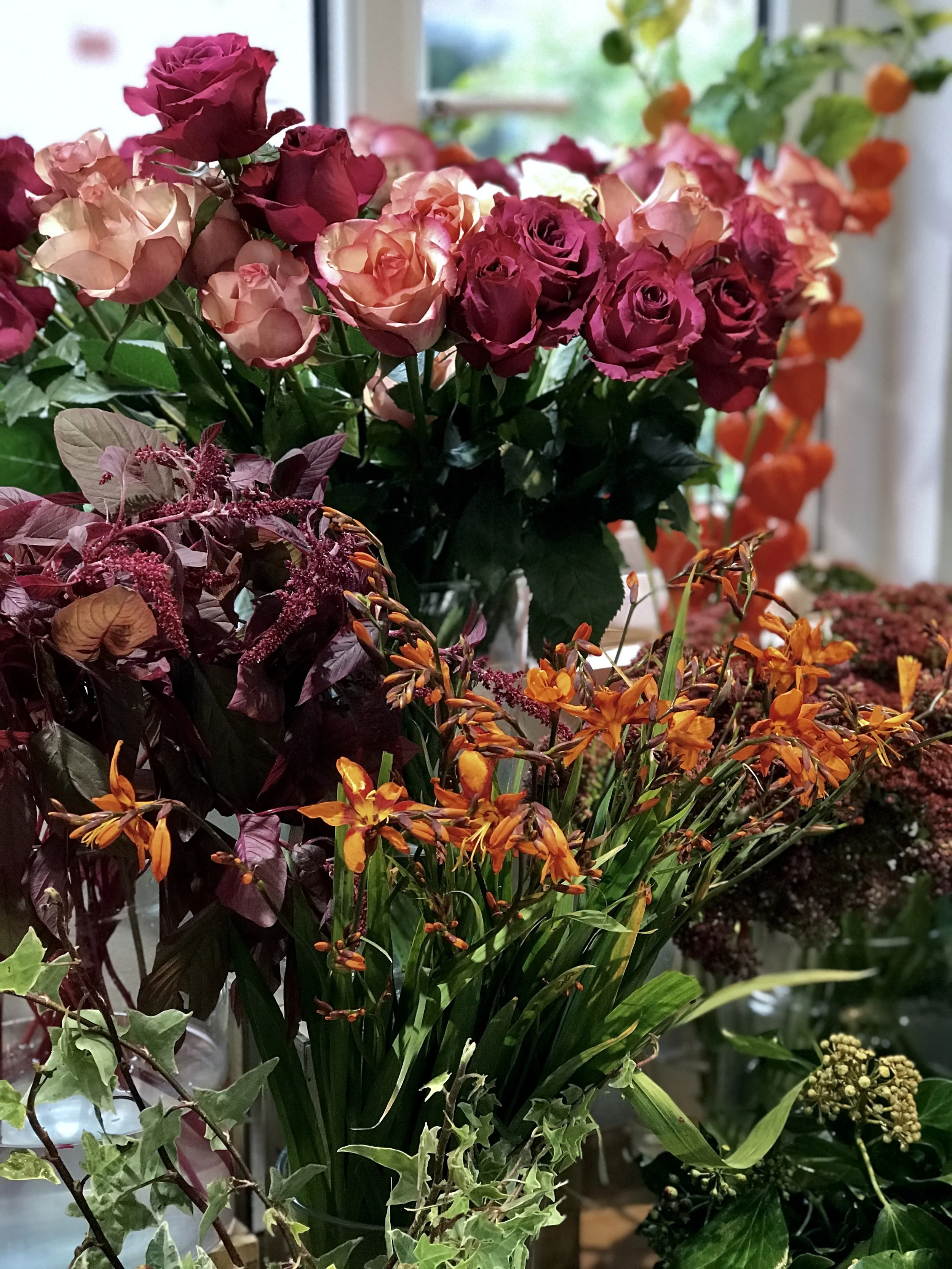Eight Steps to keeping cut flowers fresh for longer
Several things happen to flowers when they are cut from the earth.
Roots Are a Water Filter - A flower’s roots act as a filtering system preventing bacteria from entering the stem. The roots also provide a source of clean and PH pH-balanced water as well as feeding the plant the correct minerals.
No Roots, No Filter - When flowers are cut from the earth, the filtering system is removed leaving the flower free to draw up unfiltered water, air, and bacteria. This blocks the stem, which interferes with water uptake.
1. WASH YOUR VASES / BUCKETS THOROUGHLY
2. FILLING THE VASES / BUCKETS WITH WATER
3. WHAT TYPE OF STEM
4. ONLY USE FLOWER FOOD
5. PREPARE YOUR STEMS -REMOVE FOLIAGE FROM BELOW THE WATERLINE
6. CUT THE STEMS AT AN ANGLE WITH THE SHARP SCISSORS
7. PLACE IN A SUITABLE LOCATION – A COLD ROOM FOR AT LEAST 24 HOURS
8. CHECK REGULARLY AND REPLENISH THE WATER OFTEN.
Flowers have different stem types.
8 STEPS TO KEEPING CUT FLOWERS FRESH FOR LONGER
WASH YOUR VASES / BUCKETS THOROUGHLY
Carefully wash your vase with hot water & a small cap of detergent together with a sponge. Why?
This is the first step to ensuring no bacteria is present when water and flowers are introduced into the vase.
2. FILLING THE VASES / BUCKETS WITH WATER
Once you’ve done that, put the vase/bucket to one side and leave it for a while to allow some of the larger air bubbles to escape and for the water to reach room temperature. Why?
Flowers take warmer water in more efficiently than cold so, putting fresh flowers in warmer water for their first drink is crucial. Air bubbles can get stuck in the bottom of stems which can interfere with water uptake.
3. WHAT TYPE OF STEM
Look at the stems of your flowers, if they are predominantly woody stems like these roses, they prefer deep cool water, fill the vase up to around 2/3rds full.
If the stems are predominantly softer (like tulips) then fill the vase just under halfway with tap water, they prefer shallow water - container ½ full.
Hollow stems – even shallower water – 1/3 full
4. ONLY USE FLOWER FOOD
Add a flower food sachet to your vase of water and make sure it’s fully dissolved with a quick stir. What is Flower Food? Flower food is a concoction of bleach (bactericide), sugar, and citric acid (acidifier). The three ingredients contained in flower food create the perfect environment for cut flowers. If you’re being creative with your flowers and split them into small bouquets, make sure you still use the sachet but be careful not to overdose. The average sachet will contain the right dosage for 1 litre of water. Why does it work?
Bleach eliminates harmful bacteria. Sugar provides flowers with the energy to allow them to blossom. Citric acid balances the PH of tap water dissolves air bubbles and improves the effectiveness of the bleach.
Avoid Old Wives Tales - Such as adding a penny, vodka, aspirin, or lemonade, doesn’t work because they don’t combine the three key ingredients to make the perfect environment for cut flowers. • Take lemonade, for example, although lemonade will provide the much-needed sugar cut flowers need for energy, without the bleach, bacteria will also thrive on this sugar. Lemonade also contains a lot of bubbles which will clog stems very easily and this isn’t good.
5. PREPARE YOUR STEMS -REMOVE FOLIAGE FROM BELOW THE WATERLINE
Remove any foliage that will fall below the waterline of your water. Why?
If any foliage is left below the waterline, it will firstly introduce bacteria back into your clean water and will also decompose quickly being submerged.
6. CUT THE STEMS AT AN ANGLE WITH THE SHARP SCISSORS
Why?
Cutting the stems with sharp scissors/knife ensures that the cut is clean this aids water uptake and that the stem doesn't get damaged/crushed. Cutting at an angle creates a larger opening at the base of the stem for more water uptake and stops the flowers or foliage from sitting flat on the bottom of the vase.
Once your flowers have been cut, place them immediately into your vase of water. Why?
As water evaporates from leaves and the head it creates natural pressure which sucks up water. When the stems have been cut, get them back into your vase sooner, as the stem will suck up surrounding air and dust which clogs the stems.
7. PLACE IN A SUITABLE LOCATION – A COLD ROOM FOR AT LEAST 24 HOURS
Keep your flowers in a cool location away from sources of heat - radiators, direct sunlight such as windowsills, and drafts from windows or doors. Also: Keep your flowers away from any fruit or vegetables. Why?
When cut flowers are subject to heat it causes them to release more water (transpire) than they can draw up the stem causing wilting to occur. That’s why wilting flowers are very moist at the head of the stem. Fruit releases ethylene gas as it ripens which poisons cut flowers causing wilting and browning.
8. CHECK REGULARLY
Try not to neglect your flowers for more than 2-3 days. Be sure to take them out of the vase to change the water and trim the stem again. Check the quality of your vase water, if it is slightly cloudy, change it to fresh water and repeat step 2. Why?
No matter how meticulous you have been with your vase, flower food, and cutting, bacteria will still form and attach to the end of your flower stems and discolour your water. This is the most frequent cause for a short vase life so keeping on top of this is key to long-life flowers.
If the water is clear, top it up with tap water remove any floating foliage and repeat step 4, cut the stems removing at least an inch from the bottom.
Why?
Cutting at least an inch from the bottom allows an otherwise clogged stem to reopen and take up much more water.






